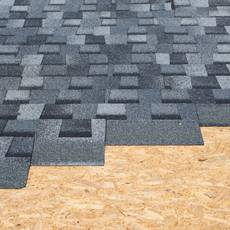How to prevent thermal shock from damaging your asphalt shingle roof and creating bigger problems in the future.
Choosing the appropriate type of asphalt shingle can help prevent thermal shock to your roof. You should match your shingle type with the climate of the area where you live. Fiberglass shingles work well for warmer climates, while organic shingles provide better thermal shock prevention in colder climates. The temperature at the time of installation is also important. Fiberglass shingles require warmer temperatures for installation, as colder weather can cause them to become brittle.

Proper ventilation of the attic area is also important. Ventilation helps to keep the air within the attic cool, which in turn helps to regulate the temperature of the roofing material, preventing sudden temperature changes from quickly expanding or contracting the shingles.
Reflective roof coatings can also help to prevent thermal shock and can be placed on the roof during installation or any time thereafter. The coating reflects much of the heat away from the roof, keeping the shingles cooler in the process. This extends the heating time of the shingles to prevent the shock from rapidly rising temperatures.
 A final preventative measure is to have the roof regularly maintained. By regularly checking your roof, you can locate damaged shingles that need to be replaced. By replacing cracked, brittle or missing shingles, you'll ensure that the roof can maintain a consistent temperature and avoid sudden temperature changes that can lead to damage.
A final preventative measure is to have the roof regularly maintained. By regularly checking your roof, you can locate damaged shingles that need to be replaced. By replacing cracked, brittle or missing shingles, you'll ensure that the roof can maintain a consistent temperature and avoid sudden temperature changes that can lead to damage.
Whether your choice of asphalt shingle roofing involves traditional 3-tab shingles or the newer laminated architectural shingles, thermal shock will remain a constant threat. Much of that danger can be alleviated with preventative action, either during the installation process or at any time afterward.













Write a Comment